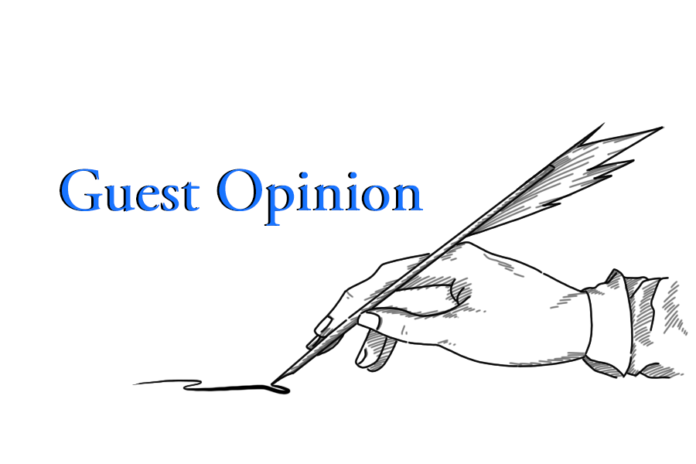And the numbers keep growing
Eight minutes and 46 seconds — the length of time Minneapolis police officer Derek Chauvin knelt on the right side of George Floyd’s neck.
18 hours — the length of time it took for residents to mobilize in the streets of Minneapolis.
Within days, citizens from California to New Zealand were protesting in solidarity with Minneapolis residents, calling for criminal action against the officers involved in the death of George Floyd and in support of the larger Black Lives Matter movement.
The purpose of this piece is neither to condone nor condemn specific actions taken by the officers involved in the death of George Floyd or the actions of those protesting, but to explain why more and more citizens are taking to the streets to protest every day.
The main issue unraveling in Minneapolis is not the demand that the officers involved in the death of George Floyd be punished. If it were, then public protests would have ceased after Derek Chauvin and the three additional officers involved in Floyd’s death were charged. But even after the officers were charged, more citizens have taken to the streets every day to rally for justice for George Floyd and the end of racial injustice.
What caused such an engulfed public response? What makes the Minneapolis protests so different from previous protests that followed incidents of police brutality?
Many factors have contributed to the recent public response. Americans have grown frustrated staying at home under shelter-in-place orders brought on by the COVID-19 pandemic. They are suffering emotionally from limited physical connections and financially from a lack of government support. Though some Americans have received stimulus funding from the federal government, many have yet to receive their checks, and the amount allocated per household — $1,200 per adult, with $500 added per dependent child — is insufficient to cover a month’s worth of expenses, let alone the more than three months that the shelter-in-place orders have lasted. From January to April of this year, unemployment rates rose by 11.2% as more than 20 million Americans filed for unemployment, surpassing figures from the Great Depression.
As a result, a growing number of citizens now realize how little the president and other political leaders value their lives and living conditions. In response, individuals have banded together to advocate and achieve change for themselves.
These factors, combined with the killing of Breonna Taylor and the video recordings of the deaths of Rayshard Brooks, George Floyd, Ahmaud Arbery and Elijah McClain, brought up racial injustices that society has tried to ignore or deny. The attention brought to these murders sparked a discussion in which citizens of varying race and socioeconomic standing from different parts of the U.S. — and even the world — have united to take part in.
The demand for action is a response to the question: Can we allow ourselves to willingly prolong racial prejudices? This question, which festered when individuals eluded punishment because of a broken justice system and their positions of authority, is finally being addressed in order for society to advance in favor of all its citizens.
Seeing no signs of change in the face of racial inequality, frustrated individuals have searched for ways to regain their stolen breaths and filched voices. This undertaking is made more difficult by the actions of individuals only interested in looting, causing property damage and making the protests about financial gain instead of racial injustice. Looting dilutes the meaning of the protest and distracts from the demands for change in the face of rampant racial inequality.
During protests against police violence, police officers have used excessive force against non-threatening protesters. In one viral incident involving excessive force, a 75-year-old man was rushed to the hospital for a concussion and cranial bleeding that resulted after Buffalo police officers violently shoved him.
At the end of the day, racial divisions can only be altered through a unified endeavor for change that comes when communities previously dehumanized by white America are given back their humanity. Though racial disparities are lessening — for example, Ferguson, Mo., recently elected its first Black mayor, Ella Jones — the rate at which it is occurring is not fast enough. Swift action is needed to correct century-long injustices.
The protests are an important catalyst for swift change. Within only 10 days of protests, Derek Chauvin, who otherwise would not have been held accountable, had his murder charge increased from third-degree to second-degree murder.
Additionally, the other three officers involved in George Floyd’s death were charged with second-degree manslaughter and aiding and abetting second-degree murder. The protests have also led to increased calls for police accountability, with positive progress already being made. The city of Minneapolis plans to ban police chokeholds and California Gov. Gavin Newsom vowed to collaborate with the California Legislative Black Caucus, various community leaders, and law enforcement to develop new standards regarding appropriate use of force by police officers. On June 25, 2020, the United States House of Representatives passed the George Floyd Justice in Policing Act by a margin of 236 yeas to 181 nays which, among other things, ends “qualified immunity” for police officers, ends racial and religious profiling at the federal, state, and local levels, and bans chokeholds and “no-knock” warrants. The comprehensive bill has been sent to the Senate for consideration.
Achieving racial equality is no small feat — America’s long history of racism proves that. But we certainly won’t overcome racial inequality until we engage in difficult, necessary conversations about race and prejudice. And until that goal is met, people will continue to protest and march for freedom.
Written by: Karura Njoroge
Karura is a photographer for The Aggie and a second-year undergraduate majoring in environmental science and management.




